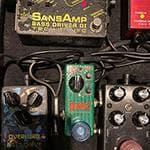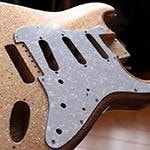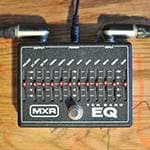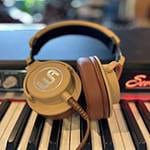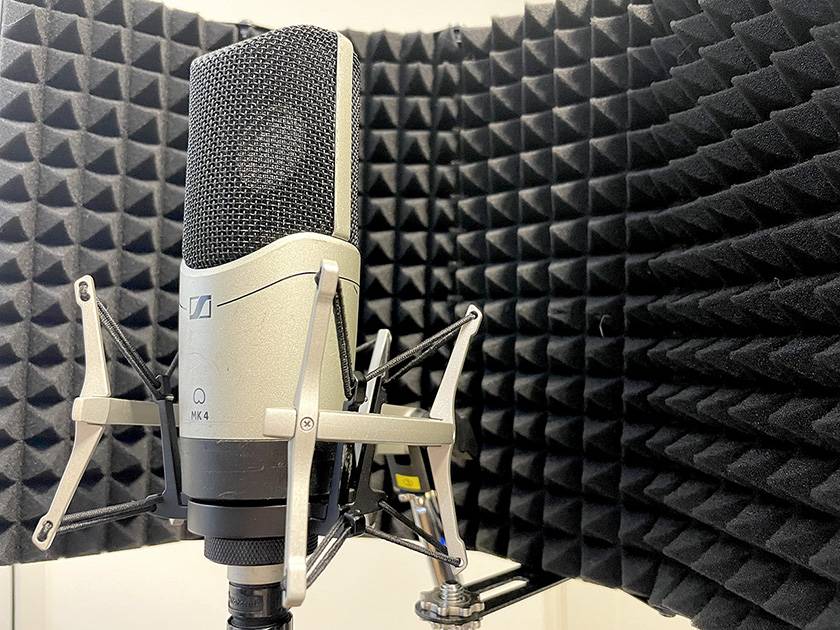
< MK4 and MKS4 >
In this era when having a personal condenser microphone has become the norm, various manufacturers have released budget-friendly condenser mics. Music stores are filled with numerous options, making it a wonderful time for musicians who enjoy home recording, whether for vocals or acoustic guitar.
However, the abundance of choices can also create confusion when making a purchase. Many may feel uncertain about which mic to choose.
The Sennheiser MK4 featured here is a large-diaphragm condenser mic from the long-standing microphone maker Sennheiser. As a budget-friendly model from a reputable brand, it’s likely to attract interest from those seeking quality sound. We tested it in various recording scenarios, so here’s a review to help guide your mic selection.
A Straightforward mic with no adjustment mechanisms, easy for beginners to use without hesitation
Inside the package, you’ll find the mic, a mic holder, and a pouch. While the pouch may look like a simple fabric bag, it’s lined with cushioning material, making it useful for safely storing and transporting the mic.
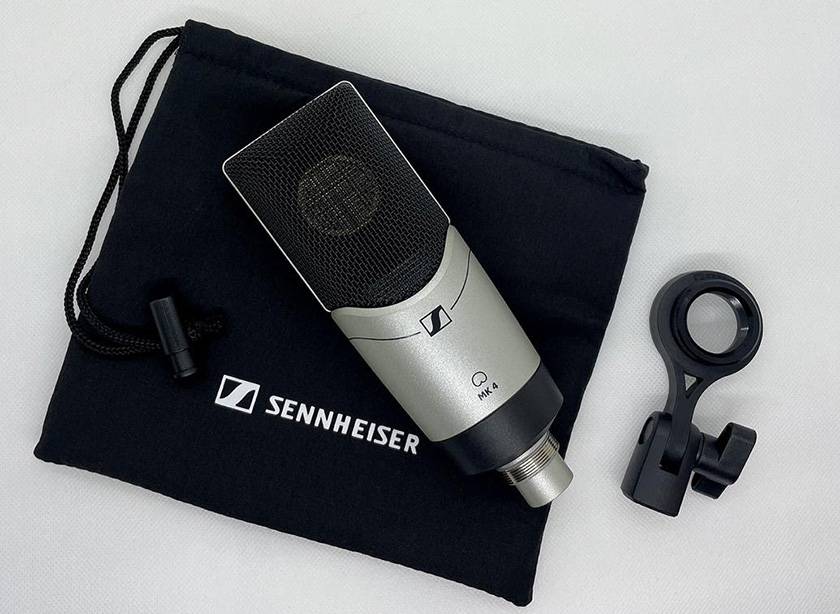
< Package Contents >
The mic holder comes with a 3/8” to 5/8” adapter, making it compatible with most mic stands right out of the box.

< Included Dedicated Mic Holder >
The MK4 microphone itself is extremely simple, with no switches for settings like polar pattern selection or low-cut filters. While multiple functions can be handy in professional settings, they can also be confusing for beginners. Additionally, making sound adjustments before recording often requires considerable experience. Since the MK4 is straightforward to use without requiring many decisions, it’s a beginner-friendly microphone.
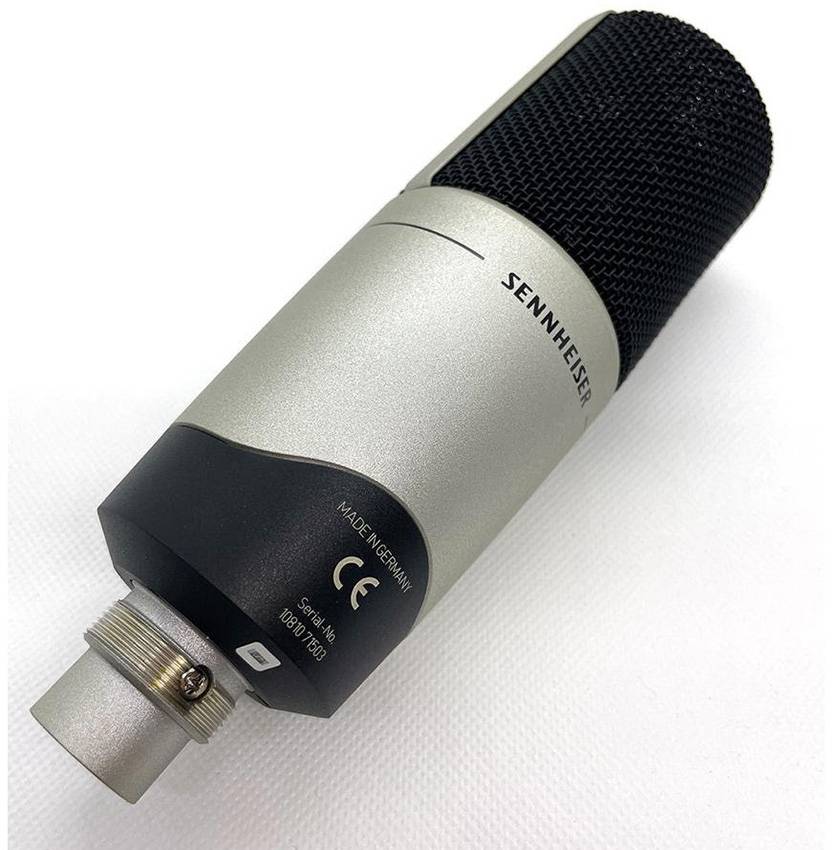
< Simple Design with No Switches on the Body >
Dense sound that holds up well during vocal editing
First, for vocal recording. The MK4 is designed based on the acoustic properties of Sennheiser’s high-end vocal mic, the e 965, making it a solid choice for vocal applications.
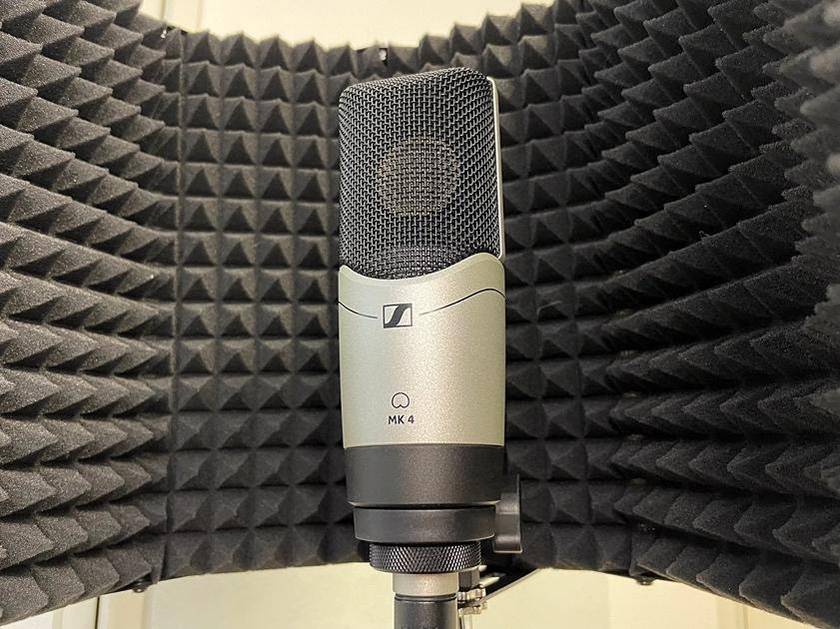
< Vocal Recording with a Reflection Filter >
The first thing to mention is its unembellished sound. Many budget-friendly mics have an exaggerated high frequency to create a ‘clear’ sound, which is often perceived as better quality. However, this boosted high-end can be challenging to handle during mixing and often doesn’t hold up well under closer listening.
The MK4 may initially sound somewhat muted, but on closer listening, you’ll find it has a dense, full sound without muddiness. It’s not lacking in high frequencies; rather, it provides a balanced output across the entire frequency range, delivering the reliable quality associated with the Sennheiser brand.
The MK4 also shows high durability when used with effects like EQ and compression. Even with added effects, the sound remains intact without losing clarity. Unlike many inexpensive mics that struggle to hold up during mixing, this mic sets itself apart. Vocalists who rely on pitch and timing corrections will find the MK4 a good option, as it maintains sound integrity even after edits.
While it has a cardioid polar pattern (primarily capturing sound from a specific direction), it’s slightly wider than typical, so be mindful of room reflections when using it. Using a reflection filter, as shown in the photo, will help reduce these unwanted reflections.
A relaxed high end for clear, easy listening—A rare feature at this price point
I also used the MK4 for recordings beyond vocals, achieving the same dense, unembellished sound.
Regarding frequency response, data shows a gentle peak above 3 kHz. However, when recording, this mid-to-high peak doesn’t stand out too much; instead, it presents a smooth, natural curve. This prevents any sharpness, making it a versatile choice across various instruments. It’s especially useful for taming the high-end brightness of acoustic guitars and brass instruments, providing a warmer sound.
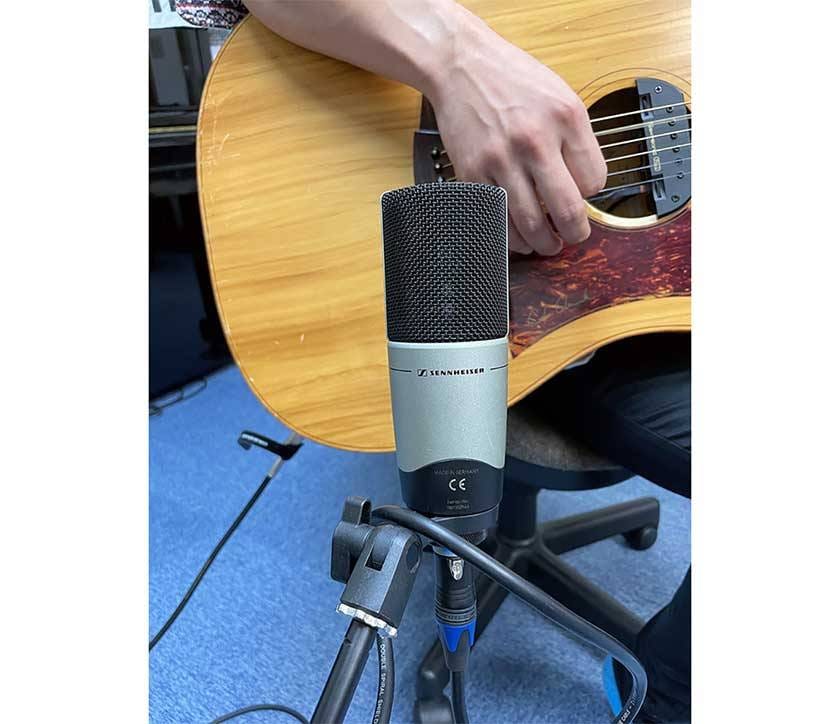
< Excellent for Multi-Miking Acoustic Guitar >
With a high sound pressure level (SPL) tolerance of 140 dB, the MK4 also performs well on drums. When used on a ride cymbal, it captured a dense, controlled high-end, creating a balanced sound that blends well with other tracks. Microphones that can mellow out high frequencies are rare, and I had assumed this kind of sophisticated tone quality was limited to high-end mics—until I discovered the MK4.
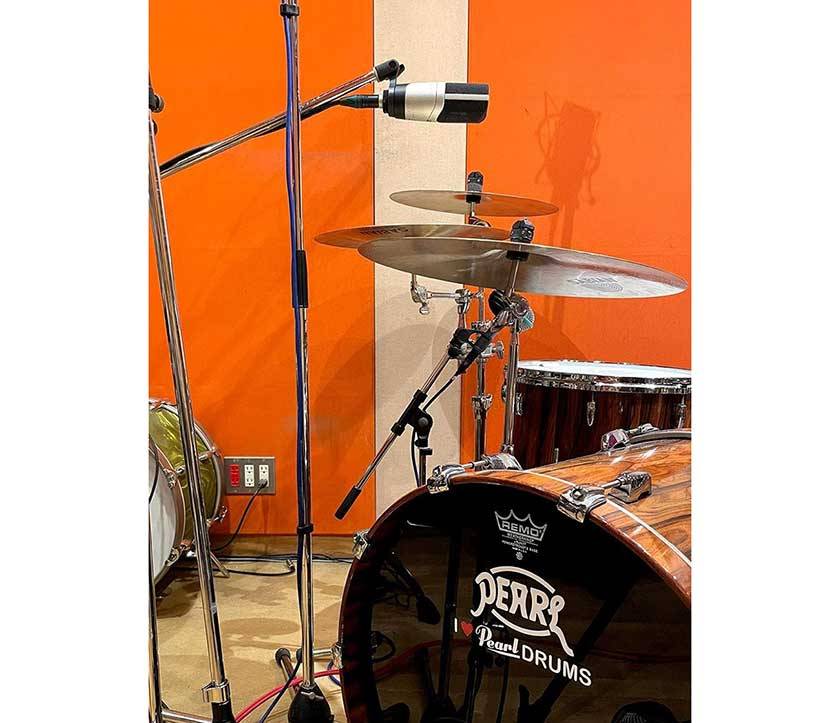
< Nicely Balanced Ride Cymbal Sound >
For professional recording engineers and live sound (PA) operators, this mic offers high-quality performance at an appealing price. It’s also a great option for situations where multiple mics are needed, providing a cost-effective way to assemble a set. When used for stereo piano recording, the MK4 delivers pleasing, well-rounded results, particularly with a resonant piano.
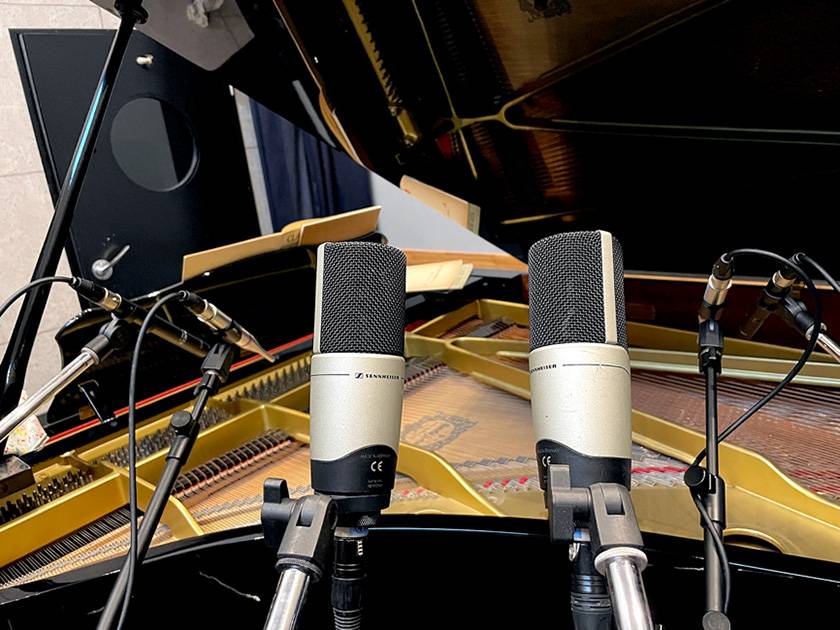
< Stereo Recording Setup with Two MK4 Microphones >
Achieving high-quality recording with the dedicated MKS4 suspension
The MK4 has a built-in shock mount to absorb vibrations, so it can perform well on its own. However, when recording drums or in situations where vibration could be an issue, the optional MKS4 suspension mount is highly recommended.
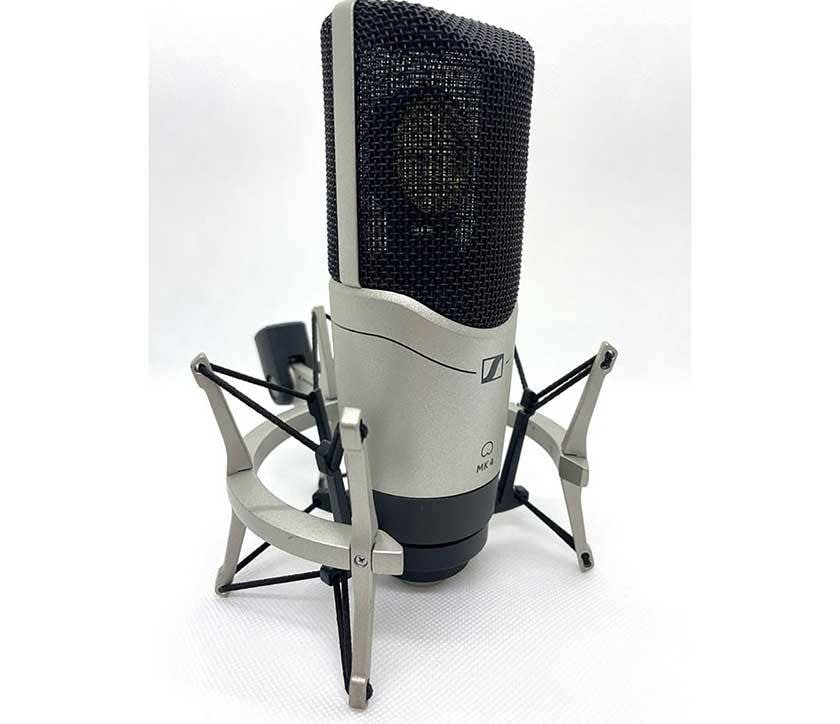
< For Vibration Control, MKS4 Suspension is Recommended >
The MKS4 has an open-frame design on the front side, allowing closer placement compared to standard condenser mic suspensions. This is particularly useful for vocals, where the MK4’s high SPL tolerance enables you to fully utilize the proximity effect for rich, intimate recordings.
Using the suspension mount effectively reduces low-frequency noise from vibrations. While ideal for high-vibration settings like drum recording, it’s equally beneficial for home vocal recordings, helping to improve sound quality by minimizing noise. For vocalists looking to capture clean recordings with minimal interference, the MKS4 suspension is a smart investment.
Sound quality that stands up to effects, bringing joy to mixing
Overall, the MK4 has a professional feel, yet it’s also accessible for beginners. In other words, it offers the qualities of high-end professional mics at an affordable price. One of the most valuable features is its ‘durability in sound’ when it comes to mixing with effects. This durability means that the sound can be further refined later, with minimal noise adding to its resilience.
If you feel it lacks high-end frequencies, simply adding a few dB with an equalizer can easily resolve this. The MK4 can handle EQ adjustments well, making it an enjoyable choice for those who mix their own tracks.
The Neumann U 87 Ai remains a first-call mic, even in today’s crowded market. The reason isn’t just its excellent sound quality but its robustness in recording. Sounds captured with the U 87 Ai can withstand mixing and editing, which is one of the reasons it’s preferred. The Sennheiser MK4 could be among the few affordable mics with similar resilience. Perfect for vocals, acoustic guitar, and a variety of uses, this mic has a professional quality that will hold up well in a home setup.
The “sound & person” column is made up of contributions from you.
For details about contributing, click here.





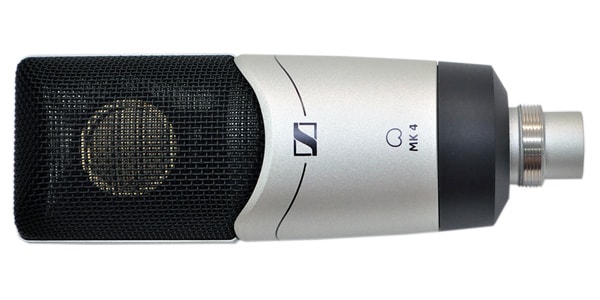
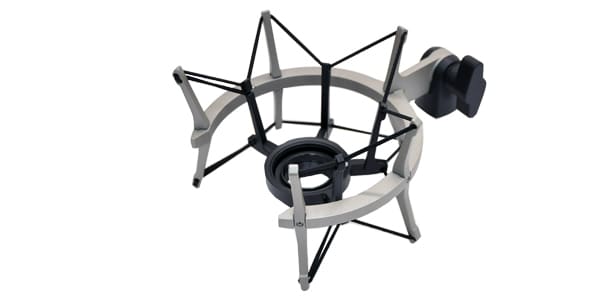



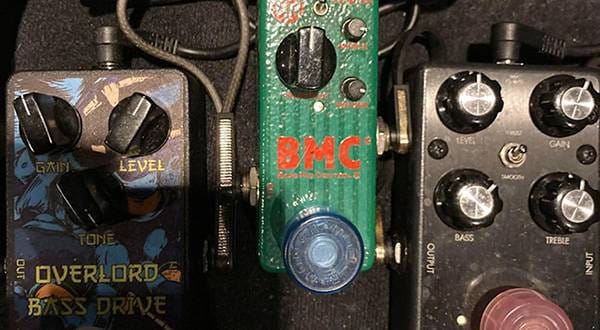
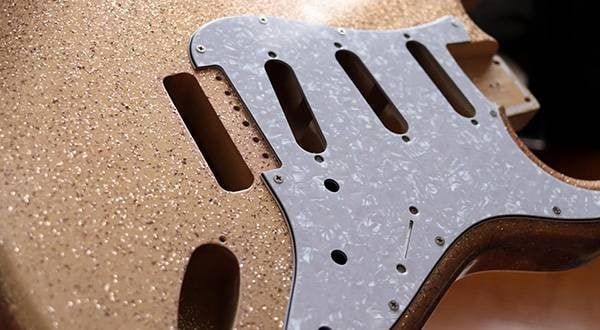
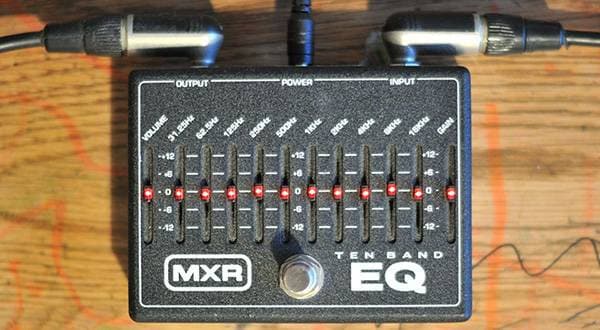
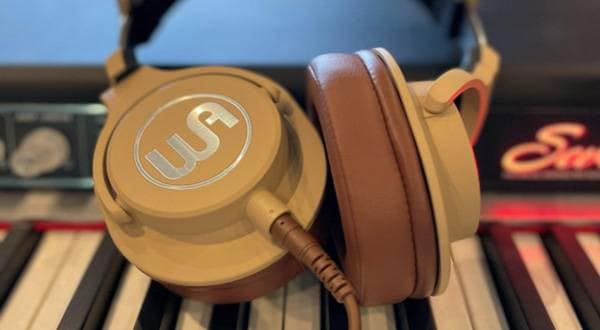


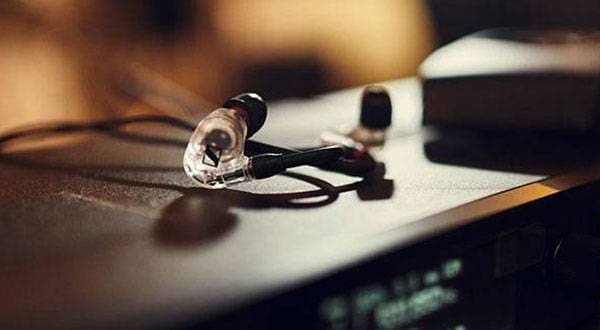
![[New Item] SENNHEISER XS Lav Series High Quality Lavalier Microphone Review!](/contents/uploads/thumbs/2/2021/5/20210531_2_13018_1.jpg)
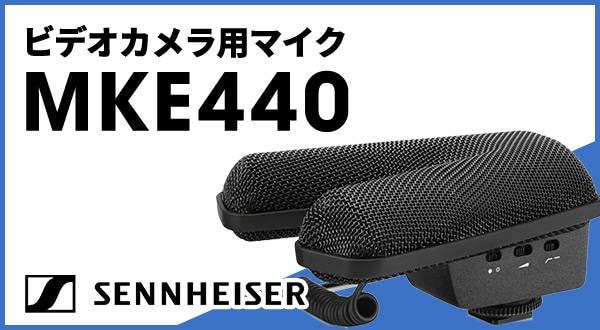
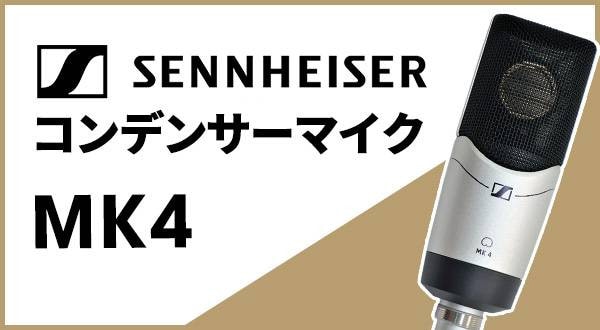

 SENNHEISER(ゼンハイザー)特集
SENNHEISER(ゼンハイザー)特集
 ミュージックビデオ撮影テクニック!
ミュージックビデオ撮影テクニック!
 コンデンサーマイクとは
コンデンサーマイクとは
 マイクケーブルの作り方
マイクケーブルの作り方
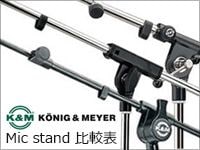 K&M マイクスタンド比較表
K&M マイクスタンド比較表
 ワンランク上のボーカルマイク選び
ワンランク上のボーカルマイク選び
